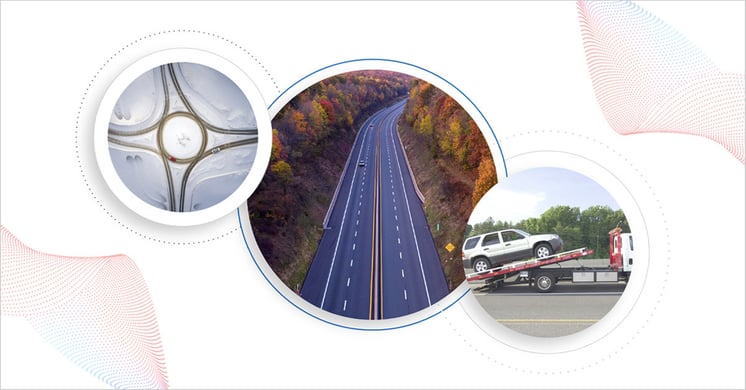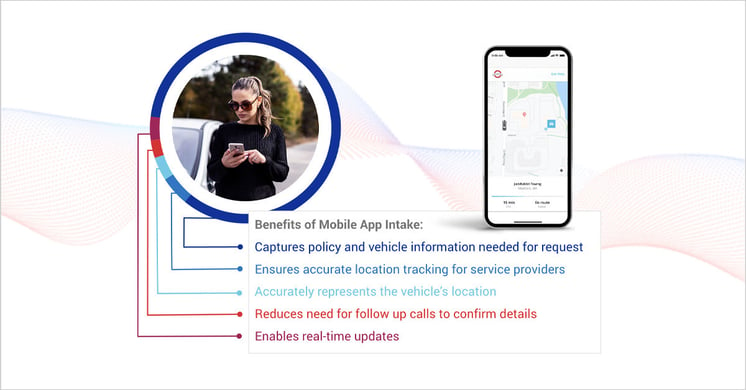The most commonly cited frustration for roadside assistance customers is the amount of time between placing their request to when a service provider arrives. Agero consistently works to deliver best-in-class wait times by growing our network of vetted, background-checked service providers and optimizing our intake process. Providers have an opportunity to further improve customer satisfaction by educating customers on both the factors that impact wait times and ways they can reduce those times. By setting the right expectations for roadside service, you can help reduce the stress and confusion drivers experience during a car disablement. Let’s start with how long customers wait for service in 2024.
The 2024 wait time landscape
Agero responds to millions of dispatches a year, providing a robust data benchmark for wait times. So far this year, the median roadside assistance ETA is 60 minutes. That’s just the estimate. How long does it actually take for the service provider to arrive? The median actual time of arrival (ATA) was 47 minutes, meaning Agero beat expectations by arriving 13 minutes faster than estimated. Agero has improved its ATA over the years, decreasing average ATA by 5 minutes since 2021. In a situation where every minute counts, each minute shaved off of the ATA gets your customers back on the road faster.

Top Factors influencing wait times
Traffic
Service providers must follow traffic laws and may be delayed during traffic peaks due to congestion on the road. Larger cities will have longer delays. To determine if a customer’s city is at risk for above average traffic delays, check out this recent report from TomTom which analyzes the top 80 US cities with the longest rush hour travel times. Keep in mind traffic peaks in the morning between 6am and 9am and in the afternoon between 4pm and 7pm.
Weather
Inclement weather can cause hazardous road conditions, requiring service providers to drive cautiously. It can also increase the number of roadside events in the area. The type of severe weather event may also impact roadways and a service provider’s ability to access you. Flooding, for example, can cause some roads to be impassible.
Type of Service
While most roadside events can be handled by a light duty service vehicle or tow truck, specialized equipment may be required for certain situations. This can sometimes lead to longer wait times, as these specialized vehicles may be less readily available. For example, a battery jump-start can often be handled by a smaller vehicle, while a winch or flatbed towing may require a larger, more specialized truck.
Location of Vehicle
Geographic location can influence wait times. Customers in less populated, rural areas may experience slightly longer wait times due to the increased travel distance required by service providers. While we have a wide network of vetted service providers with access to every zip code, the distance involved can sometimes affect response times.
Information Collected during Intake
The depth information collected during the roadside request can also impact customer wait times. Missing data during intake will require follow up calls from agents, delaying dispatch.
Tip: To improve information collected during intake, leverage digital methods like Agero’s Mobile Web and Web App channels or your brand’s mobile app, using the most up-to-date API.

Empower Your Customers Through Digital Intake
Accurate location tracking
A common pain point for service providers is locating the customer’s vehicle when arriving on scene. Digital intake often allows customers to confirm their vehicle’s exact location and leave comments with additional details to help direct the service provider. Customers can also track the service provider while they are en route using live event tracking. Users that had access to GPS tracking reported higher satisfaction with the event, even if the service provider was later than the ETA.
Accurate vehicle information
Most digital intake channels ensure the dispatcher has access to the required information regarding the customer’s vehicle and active coverage, preventing the need for follow up calls that delay dispatch. For example, mobile apps can store warranty or coverage details, vehicle make, model, color, VIN, and license plate number, all of which are necessary for intake. The more comprehensive the details provided during intake, the faster a service provider can be dispatched with the appropriate equipment.

Setting Realistic Expectations and Enhancing Customer Satisfaction
Wait times can be a frustrating aspect of roadside assistance. To enhance customer satisfaction, it's crucial to set realistic expectations and provide transparent information. While an ETA of one hour is the norm, it's important to emphasize that external factors like weather, traffic, and location can influence actual arrival times. Additionally, adopting a digital intake process can streamline the assistance process and improve overall efficiency. If your business currently relies on telephone intake for roadside assistance requests, it’s time to make a change. Agero can help up your game. Reach out to your Client Success contact to learn how.
Want to share this information with your customers? Click here to download the Roadside Assistance Wait Times one-pager.





.jpg?width=200&name=EmmaHarrisHeadshot-SocialSized%20(1).jpg) Emma Harris is a Senior Marketing Communications Specialist at Agero, focused on supporting and executing the communications strategy for the Motor Club line of business. Her background in digital marketing and web technology agencies, along with advanced certifications, makes her a go-to for strategic digital recommendations. When she's not focused on communications, Emma balances her passions for amateur photography, travel, and pursuing her sommelier certification.
Emma Harris is a Senior Marketing Communications Specialist at Agero, focused on supporting and executing the communications strategy for the Motor Club line of business. Her background in digital marketing and web technology agencies, along with advanced certifications, makes her a go-to for strategic digital recommendations. When she's not focused on communications, Emma balances her passions for amateur photography, travel, and pursuing her sommelier certification.